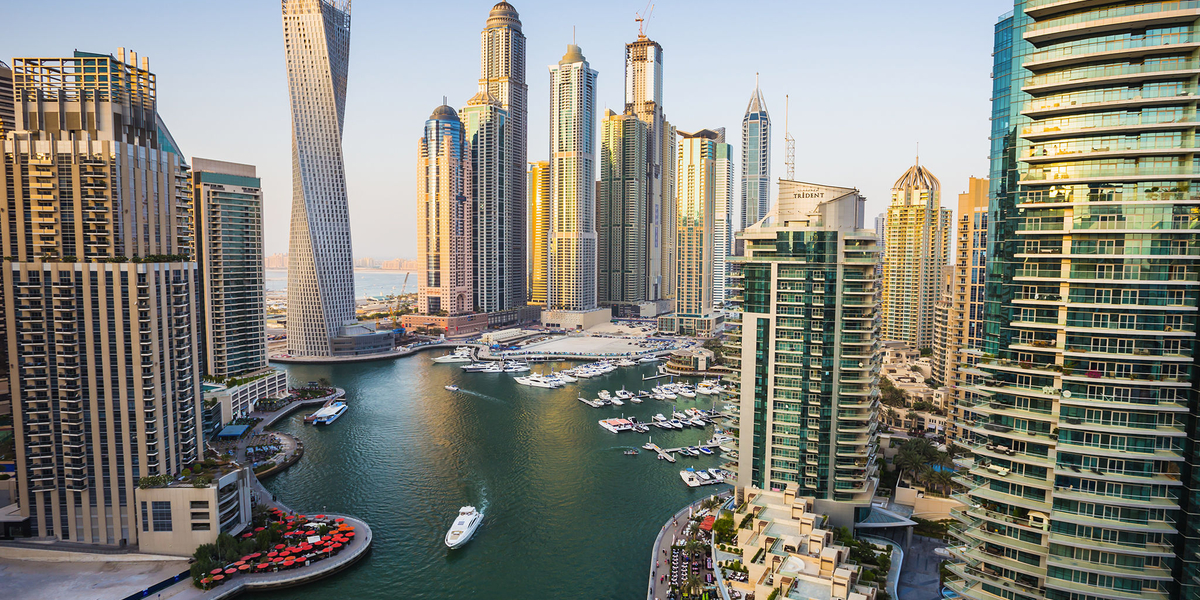Dubai, a dazzling metropolis in the heart of the Arabian Peninsula, is known for its opulence, stunning architecture, and vibrant culture. However, the city’s weather can significantly influence your experience, whether you’re planning a visit or considering a long-term stay. This article explores everything you need to know about Dubai weather, covering seasonal changes, temperature ranges, humidity levels, and essential tips for navigating the city’s climate.
Overview of Dubai’s Climate
Dubai’s climate is desert-like, with scorching summers and moderate winters. The city enjoys abundant sunshine year-round, making it a popular destination for tourists seeking sun and warmth. However, understanding the nuances of its climate is crucial for making the most of your time in this unique city.
Seasonal Breakdown
Winter (December to February)
Temperature: The winter months in Dubai are pleasantly mild, with daytime temperatures ranging from 24°C to 26°C (75°F to 79°F) and cooler evenings dropping to around 15°C to 17°C (59°F to 63°F).
Humidity: Humidity levels are relatively low, making it a comfortable time for outdoor activities and sightseeing.
Activities: This is peak tourist season, with numerous events and festivals, including the Dubai Shopping Festival.
Spring (March to May)
Temperature: Spring sees a gradual increase in temperatures, reaching highs of 29°C to 35°C (84°F to 95°F) by May. Nighttime temperatures remain mild at around 20°C to 25°C (68°F to 77°F).
Humidity: Humidity starts to rise, but it’s still manageable.
Activities: Spring is a fantastic time for outdoor activities and exploring the city before the summer heat sets in.
Summer (June to August)
Temperature: Summers in Dubai are intense, with daytime temperatures frequently soaring above 40°C (104°F). Nighttime temperatures remain high, around 30°C (86°F).
Humidity: The humidity levels increase significantly during summer, particularly in July and August, making the heat feel even more oppressive.
Activities: Many residents and tourists opt for indoor activities during these months, utilizing air-conditioned malls and attractions.
Autumn (September to November)
Temperature: Autumn marks the transition from the scorching summer to more bearable temperatures. September still sees highs of 40°C (104°F), but by November, temperatures drop to around 26°C to 32°C (79°F to 90°F).
Humidity: Humidity levels gradually decrease, making it more comfortable for outdoor activities.
Activities: This is another great time for tourism, with many outdoor events and festivals, including the Dubai International Film Festival.
Weather Patterns and Trends
Temperature Fluctuations: Dubai’s temperature can vary significantly between summer and winter. The summer months can feel unbearably hot for those unaccustomed to such temperatures. In contrast, winter offers a comfortable climate perfect for exploration.
Humidity Levels: Humidity can make high temperatures feel even more oppressive during the summer. While humidity is lower in winter, it can still be high during specific periods, particularly from late spring to early autumn.
Rainfall Patterns: Most of Dubai’s rain occurs during the winter months. However, rain showers can be unpredictable, with some years experiencing more significant rainfall than others. Generally, rainfall is light and short-lived.
Best Time to Visit Dubai
The milder months of November through March are the ideal times to travel to Dubai. During this period, temperatures are more manageable, and outdoor events are abundant. Visitors can enjoy activities like desert safaris, beach outings, and exploring the city’s many attractions without the sweltering heat.
Avoiding the Heat: If visiting during the summer months, it’s essential to plan activities accordingly:
Morning and Evening Activities: Schedule outdoor activities in the early morning or late evening when temperatures are cooler.
Indoor Attractions: Explore Dubai’s indoor attractions, such as malls, museums, and entertainment venues, during the hottest parts of the day.
Stay Hydrated: It can get very hot, especially in the summer. To stay hydrated and prevent heat-related ailments, drink lots of water.
What to Expect: Humidity and Wind
While the heat is a defining feature of Dubai’s climate, humidity plays a crucial role in how comfortable the weather feels. During the summer months, humidity can rise above 90%, particularly in coastal areas, leading to a “feels-like” temperature that is significantly higher than the actual temperature.
Wind Patterns: Dubai typically experiences light to moderate winds, especially during the spring and fall. However, the summer months may bring occasional dust storms, reducing visibility and air quality. These storms usually occur in the afternoon and are often brief, with the air clearing afterward.
Best Times to Visit Dubai: Given the extreme heat of summer, the best times to visit Dubai are during the winter months from December to March. The weather is pleasantly warm, making it ideal for outdoor activities, sightseeing, and enjoying the many attractions Dubai has to offer. However, if you prefer fewer crowds and lower prices, consider visiting in late autumn (November) or early spring (March).
Tips for Dealing with Dubai Weather
Stay Hydrated: The heat can be intense, especially during the summer. Drink plenty of water to stay hydrated and avoid heat-related illnesses.
Plan Indoor Activities: During the hottest months, plan your activities for the early morning or late evening, and consider indoor attractions such as shopping malls, museums, and indoor amusement parks.
Dress Properly: To keep your body cool, choose loose-fitting, airy clothing. Light colors are advisable as they reflect sunlight.
Use Sunscreen: The sun can be intense, even in winter. Apply sunscreen regularly to protect your skin.
Check the Weather Forecast: Always check the local weather forecast before heading out to plan your day accordingly.
Avoid Peak Hours: If you’re planning outdoor activities, avoid the midday sun (12 PM to 3 PM) when temperatures are at their highest.
Use Air Conditioning: Most buildings, malls, and public transport systems in Dubai are air-conditioned. Take advantage of this when traveling around the city.
FAQs
What is the best time to visit Dubai for pleasant weather?
The best time to visit Dubai is from November to March. During these months, temperatures are cooler, ranging from 20°C to 30°C (68°F to 86°F), making it ideal for outdoor activities, sightseeing, and enjoying the beaches.
How hot does it get in Dubai during the summer?
Dubai experiences extremely high temperatures from June to September, often exceeding 40°C (104°F) during the day. Humidity levels can also rise, making it feel even hotter. Outdoor activities are best avoided during these peak summer months.
Does it ever rain in Dubai?
Rain in Dubai is rare, but it can occur between November and February. Typically, the city receives about 3-5 days of rain during this period, with January being the wettest month. However, the rainfall is usually light and short-lived.
What is the average humidity level in Dubai?
Dubai has a relatively high humidity level, especially during the summer months. Humidity levels can range from 60% to 90%, contributing to the heat index and making it feel hotter than the actual temperature.
Is Dubai affected by any natural disasters?
While Dubai is not prone to natural disasters like hurricanes or tornadoes, it can experience sandstorms, especially during the transition from winter to summer. These storms can reduce visibility and air quality.
Conclusion
Dubai’s weather can be extreme, but with the right preparation and knowledge, you can fully enjoy everything this dynamic city has to offer. From its luxurious shopping malls to stunning outdoor attractions, understanding Dubai’s weather patterns is essential for making the most of your visit. Whether you’re basking in the winter sun or exploring indoor attractions during the scorching summer, Dubai promises an unforgettable experience year-round.
To read more, Click Here .



